 February 2, 2017 John E. Ross, KD8IDJ, Editor
| |||||||||||||||||
Connecticut Radio Amateur Endows ARRL Collegiate Amateur Radio Initiative A generous donation from Dr. Ed Snyder, W1YSM, of Wallingford, Connecticut, will endow a fund to support the ARRL Collegiate Amateur Radio Initiative (CARI). Snyder also has provided an additional contribution of "seed money" to help get the initiative off the ground. Snyder said that he hopes the "W1YSM Snyder Family Collegiate Amateur Radio Endowment Fund" will lead to the development of a national network of college Amateur Radio clubs under the aegis of ARRL and set up ways for these clubs to stay in close contact and communicate on the air, in meetings, and through other activities.
"College Amateur Radio activities can provide the ideal bridge between youthful interest in the subject and life-long participation in our community," ARRL CEO Tom Gallagher, NY2RF, said. "Dr. Snyder, through his generosity, has provided foundational funding for this important mission." Gallagher recently wrote about collegiate Amateur Radio in a QST editorial, "Sis-Boom-Bah," which appeared in the December 2016 issue of QST. Although he didn't become a ham until fairly recently, Snyder said he developed an interest in Amateur Radio as a teenager; his father and his uncle were involved with the retail side of radio -- his dad, Jack, worked at Allied and Lafayette, and his uncle, Ben Snyder, W2SOH (SK), was an executive at New York City's Harrison Radio. "My first radio was a Hallicrafters S-38E," Snyder told ARRL. "I could not put up an antenna to transmit, so I occupied myself as a SWL." Later, he got into collecting vintage and antique radios.
Within a few months, Snyder had earned his Technician, General, and Amateur Extra tickets, and he became a Volunteer Examiner and traded his first call sign, KC1FCJ, for W1YSM (Yale School of Medicine). Soon, he found himself as secretary/treasurer and net control station of the once-inactive, but now newly reinvigorated, Yale Amateur Radio Club (W1YU), as well as the chair of the Meriden (Connecticut) Amateur Radio Club Activities Committee. "I have an awful lot of lost time to make up for," Snyder said wistfully.
Snyder said he wanted to give something tangible back to Amateur Radio and to honor his family members' prominent association with Amateur Radio. "The idea of setting up an endowment through ARRL seemed like a perfect solution," he said. "I want to focus on collegiate Amateur Radio and hope that the W1YSM Snyder Family Collegiate Amateur Radio Endowment will help ARRL focus some of its efforts on getting college club stations back on the air and active. Amateur Radio needs to have a bigger impact in this age of cell phones and digital communications." Snyder, an M.D. and a professor of laboratory medicine at Yale, said he believes his father and his uncle would be pleased to know how active he's become in Amateur Radio. "This may be my hobby, but it is their contributions to an earlier era of radio that I hope to commemorate," he said. Visit the ARRL Collegiate Amateur Radio Initiative (CARI) Facebook page to learn more and become involved. Another Outstanding Year for Amateur Radio Licensing! Last year -- 2016 -- was another outstanding one for Amateur Radio licensing, says ARRL Volunteer Examiner Coordinator (VEC) Manager Maria Somma, AB1FM.
"New Amateur Radio licenses issued were up by 1% over 2015, and this is the third year in a row that the total number of new licenses has exceeded 30,000," Somma reported. She said 32,552 were granted in 2016, 32,077 in 2015, and 33,241 in 2014. Somma said that while 2014 was a record-setting year for new licenses issued, ARRL VEC "continues to see an elevated interest in obtaining an Amateur Radio license." The overall trend continues to be up, up, up! The total number of US Amateur Radio licensees has continued to grow each year since the FCC eliminated the Morse code exam requirement in 2007. Over the past decade, the net number of Amateur Radio licensees has risen by nearly 87,000, according to statistics compiled by ARRL Pacific Section Manager Joe Speroni, AH0A. As of December 31, 2016, the total number of licensees in the FCC database was 742,787, topping the 2015 total of 735,405, but down just slightly from the all-time high of 743,003 reached last November.
Somma said license upgrades were down by 5% compared to 2015 -- 10,617 versus 11,224. "A new Amateur Extra class [question] pool took effect on July 1, 2016, which may have impacted upgrade totals in the second half of the year," she speculated. As of December 31, according to figures compiled by Speroni, there were 143,337 Amateur Extra licensees, 45, 071 Advanced licensees, 172,807 General licensees, 371,560 Technician licensees, and 10,012 Novice licensees. The FCC no longer issues Advanced and Novice class licenses. The General and Technician licensee totals at the end of last year were all-time highs, and the Amateur Extra total was nearly so. Transcontinental Relay Recreated for 100th Anniversary Commemoration A cross-country, station-hopping relay this month recreated the January 27, 1917, route of the first formal Amateur Radio transcontinental message traffic bound for ARRL Headquarters. This method of traffic handling is in the DNA of the then-nascent national organization for Amateur Radio's name -- American Radio Relay League.
Kent Trimble, K9ZTV, organized the January 27 commemoration, in which a message originating at W6UE, the Caltech club station in Los Angeles, hopped to K8ZTT in Denver; to W9ABD in Jefferson City, Missouri; to KT2D in Albany, New York, and finally to W1AW. The message was addressed to ARRL CEO Tom Gallagher, NY2RF. The commemorative event took place on 160 meters, as it was the band closest to the 200-meter wavelength used for the original accomplishment. "The spirits of 6EA 9ZF 9ABD 2AGJ and 1ZM send commemorative greetings on the 100th anniversary of first transcontinental relay of formal message traffic 73," read the message, which included the call signs and locations of the stations involved in the relay.
As Trimble reported, the message originated at W6UE at 0801 UTC and followed the same path of the 1917 message relay. "Despite deep QSB, persistence paid off with Bob Dillon, KT2D, confirming receipt before completing the route to W1AW at approximately 0930 UTC," Trimble recounted. That was 4:30 AM in Connecticut. "Great work, all, especially W9ABD's patience working through the QSB and QRN on the long Jefferson City-to-Albany leg," Dillon said. W1AW Station Manager Joe Carcia, NJ1Q, reported that copy on KT2D was fair, with some troublesome noise and fading.
In 1917, two messages originated by the Seefred brothers to ARRL President Hiram Percy Maxim, and one from Lindley Winser to ARRL Co-Founder Clarence Tuska were relayed from 6EA in Los Angeles to Capt. W.H. Smith, 9ZF, in Denver, to Willis P. Corwin, 9ABD, in Jefferson City, to Kenneth Hewitt, 2AGJ, in Albany, and finally to Maxim's 1ZM in Hartford, Connecticut. The routing for this month's commemorative event was identical to that of a century earlier. The very first effort to move formal message traffic via Amateur Radio from coast to coast, on January 4, 1917, "was broken up by static," according to an account in Two Hundred Meters and Down, by Amateur Radio historian Clinton DeSoto, W9KL.
DeSoto said the January 27, 1917, triumph, in which three messages were relayed across the US, was topped a few days later on February 6, when a piece of traffic originating on the east coast made its way to the west coast, with a reply reaching the east coast all within 1 hour and 20 minutes. "This marks the first real Amateur Radio communication with a definite address," noted an article, "Trans-continental Traffic Begins," that trumpeted the January 27, 1917, accomplishment in the April 1917 issue of QST. "We are told that broadcast messages have been put across [the country] before, but it is an altogether different thing to get something across by luck, trusting to any station who may happen to hear it, and to handle a message to a definite address through definite relay stations." In 2007, the Mid-Missouri Amateur Radio Club in Jefferson City, Missouri, observed the 90th anniversary of that historic night with a special event honoring the then-teenaged Willis P. Corwin, 9ABD, the operator at that second point in the relay in 1917. Today, W9ABD is the call sign of the Corwin Heritage Amateur Radio Club in Jefferson City. "We set up within feet of his original spark-gap shack," Trimble recounted in a 2008 Electric Radio article. "The mayor of Jefferson City dedicated a plaque on that site in his memory." Corwin died in 1959, on the 42nd anniversary of the January 27, 1917 milestone. The Doctor Will See You Now! "Meteor Scatter" is the topic of the latest (January 26) episode of the "ARRL The Doctor is In" podcast. Listen...and learn!
Every 2 weeks, your host, QST Editor-in-Chief Steve Ford, WB8IMY, and the Doctor himself, Joel Hallas, W1ZR, will discuss a broad range of technical topics. You can also e-mail your questions to doctor@arrl.org, and the Doctor may answer them in a future podcast. Enjoy "ARRL The Doctor is In" on Apple iTunes, or by using your iPhone or iPad podcast app (just search for "ARRL The Doctor is In"). You can also listen online at Blubrry, or at Stitcher (free registration required, or browse the site as a guest) and through the free Stitcher app for iOS, Kindle, or Android devices. If you've never listened to a podcast before, download our beginner's guide. Just ahead: "AM and SSB." NPOTA Participation Leads to Inaugural Communication Detail for National Park Service Jeff Dahn, KB3ZUK, of Rockville, Maryland, activated every available NPOTA unit in the Washington, DC, area during the year-long National Parks on the Air (NPOTA) program. That, and his prior DC-area law enforcement experience, gave him a leg up to snag a gig during the presidential inauguration and the Women's March on Washington as a radio operator for the National Park Service (NPS). Dahn, an ARRL member, spent 32 hours over the course of 3 days as a volunteer, operating park service radios from NPS Headquarters.
"I was invited to serve as a communications officer during the inauguration at the NPS Incident Command Post at their Headquarters facility as a direct result from participating in NPOTA," Dahn told ARRL. NPS Eastern Incident Management Team Communications Officer Gary Shipley, N5GQD, said Dahn was a quick study. "He handled announcements, dispatching, trouble calls, and requests for assistance on four radio nets with ease," Shipley said. "He also handled equipment issues. He provided timely and valuable assistance and his participation was key to the success of the mission." In appreciation, NPS gave Dahn a reflective service vest, scarf, and hat, plus he got to meet the NPS's Acting Director, Michael Reynolds. Dahn said the climate-controlled, access-restricted environment was a far cry from his first presidential inauguration experience on January 20, 1993, while serving as a law enforcement officer. "I remember standing at parade rest for what seemed like hours on the parade route between the crowd and the street, facing the crowd, not the procession, while hungry and freezing," he recounted. On his second day, Saturday, January 21, Dahn was up very, very early, and involved with "coordinating planning with local point folks involved with the Women's March on Washington (WMW)." Just elected president of the HacDC Amateur Radio Club, Dahn was able to give the okay for his club's W3HAC facility to serve as the net control station site for Amateur Radio operators helping those arriving for the march. "[T]hat facilitated another connection between the NPS Dispatch Center HQS Incident Command Post and the volunteer Amateur Radio NCS, who were both communicating and working with their stations in the field as the 'boots on the ground' on both sides of the equation!" Dahn observed.
Art Feller, W4ART, was the primary NCS at W3HAC. "We did what hams do best -- communicate messages clearly and accurately between WMW leaders and key staff members," Feller told ARRL. Dahn said radio amateurs "were, at several times, the only working communication link between organizers, marshals, volunteers, and marchers." Dahn said it was an honor and a privilege to serve as a volunteer. "It was amazing to have been given the chance to participate and to have been so closely involved with such an amazing event," he told ARRL. "Dahn's participation in a formal NPS communications event has helped to strengthen further the ties between the NPS and the Amateur Radio community," ARRL Media and Public Relations Manager Sean Kutzko, KX9X, said. AM Rally Set for April 1-3 -- No Fooling! Ever wonder what that "AM" button is for on your transceiver? Well, if you don't know about full-carrier amplitude modulation (AM) or have never used it on the air, you'll get the chance during the AM Rally, April 1-3, on the HF bands between 160 and 10 meters (except 30, 17, and 12 meters) plus 6 meters.
A cooperative event organized by AM, SSB, and, yes, even CW operators, the AM Rally aims to encourage fellow operators to take this "sister mode" for a spin, make a few contacts, and have a shot at earning some nice certificates.
"We plan to make the AM Rally fun for everyone, but we also want to help ops who might be new to the mode get their rigs set up and sounding the best they can in time for the event," said Clark Burgard, N1BCG, who is spearheading the event with Steve Cloutier, WA1QIX, and Brian Kress, KB3WFV. "Whether your rig is software defined, solid state, vacuum tube, hybrid, homebrew, or broadcast surplus, you'll be a welcome part of the AM Rally." The event website has complete AM Rally details, contact information, award categories, logging, and tips on how to get the most out of your station equipment in AM mode. The AM Rally begins on Saturday, April 1 at 0000 UTC (Friday, March 31, in US time zones) and concludes at 0000 UTC on Monday, April 3. It's open to all radio amateurs capable of transmitting full-carrier AM, using any type of equipment, from vintage to bleeding edge. The event is sponsored by Radio Engineering Associates (REA), in cooperation with ARRL, which supports all modes of Amateur Radio operation.
If you like to get on the air and have fun and now operate -- or would like to operate -- AM mode, then you're good to go! Participating stations earn 1 point for each station worked per band, and you may work the same station on more than one band. They also earn 1 point for each state, Canadian province/territory, or DXCC entity worked. Both stations must be using AM for a contact to count. Certificates will be awarded to stations scoring the highest number of points in each of the five power classes, regardless of rig category, both for most contacts and most states/provinces. "All it takes is a turn, push, or click to participate!" There's also plenty of time to dig out and dust off that old AM-capable tube gear sitting in your attic or basement. Shopping for Valentine's Day? ARRL Would Love your Support via AmazonSmile Valentine's Day is Tuesday, February 14. There's still time to find your loved ones the perfect gift. Buy your Valentine's Day gifts at AmazonSmile, and Amazon will make a donation to ARRL!
Amazon has a large variety of gifts that are perfect for Valentine's Day, including electronics, jewelry, clothing, and more. Bookmark ARRL's link and support Amateur Radio and ARRL every time you shop. You shop. Amazon gives. New to AmazonSmile? AmazonSmile is the same Amazon you already know, with the same products, prices, and service. Visit AmazonSmile and log in to your Amazon account, or, if you're new to Amazon, create an account. Bryant Rascoll, KG5HVO, is Dave Kalter Youth DX Adventure Essay Contest Winner Twelve-year-old Bryant Rascoll, KG5HVO, of New Orleans, is the winner of The Dave Kalter Youth DX Adventure (YDXA) essay contest. Not only did he receive a transceiver, 50 feet of coax, a power supply, and a vertical antenna, he'll be headed to Costa Rica this summer to take part in the YDXA DXpedition.
YDXA co-founder Todd Dubon, KD4YHY, made the award presentation at the January 26 meeting of the Jefferson Amateur Radio Club -- Bryant's home club. Bryant got his license in May 2015, after being introduced into Amateur Radio through the Boy Scouts Radio Merit Badge program. He's chasing DXCC on phone and is a budding CW contester. Applications are still being accepted for team members for the August 3-8 YDXA trip. These will also be available at YDXA's Hamvention® booth in May. New Rookie Roundup Rules Will Mean More Rookies on the Air: Changes to the rules for Rookie Roundup will make it possible for more radio amateurs to qualify for the "Rookie" category. Rookie Roundup is a 6-hour operating event aimed at radio amateurs licensed for 3 years or less. Operators first licensed in 2015, 2016, or 2017 already qualify as Rookies for the next Rookie Roundup, which will be the SSB event on April 17, 1800-2359 UTC.
Starting with the SSB event in April, operators licensed before 2015 may enter as Rookies if they made their first Amateur Radio contact during 2015, 2016 or 2017 -- or if they have never before made a contact using the mode of the upcoming Rookie Roundup (i.e., SSB for April, RTTY for August, and CW for December). These operators should send 2017 in their exchange, and those qualifying for either of these reasons will be Rookies only for 1 year. Rookie Roundup is the third Sunday in April (SSB), August (RTTY), and December (CW). Stations send the year they were first licensed as part of the exchange. Rookies attempt to make as many contacts as possible and may work everyone. Non-Rookies may only work Rookies. Mentoring is a big part of this event, multioperator teams can compete, and veteran operators are encouraged to participate! Veteran Volunteer Examiner Lauded for his Dedication Mel Fukunaga, KH6H, of Wailuku on the Hawaiian island of Maui has been a volunteer examiner with the ARRL VEC since its inception in 1984, becoming accredited with the ARRL VEC in September of that year.
"For the past 32 years, Mel has faithfully conducted three exam sessions on average every year," said ARRL VEC Manager Maria Somma, AB1FM. "The VEC appreciates his dedication and service to the Amateur Radio community in Hawaii." On December 2, Fukunaga, an ARRL Life Member, administered his 100th exam session, and the Maui Amateur Radio Club honored his long-term dedication to Amateur Radio licensing on Maui by presenting him with an engraved bowl. Fukunaga heads the island's VE team, which administers ham radio examinations three times a year -- in April, August, and December. For many years, Fukunaga served as the Amateur Radio Emergency Service (ARES) District Emergency Coordinator on Maui. New York Marathon, Running Luminary Allan Steinfeld, W2TN, SK Former New York City Marathon Race Director Allan Steinfeld, W2TN, of Bowers, Pennsylvania -- considered a founding father of the modern running movement -- died on January 24. He was 70. "Allan was one of the great pioneers in road race administration, developing many of the protocols required for a successful big-time event," said Dave Katz, the technical director for the International Association of Athletics Federations (IAAF), USA Track & Field, and many marathons, in a Runner's World obituary.
Amateur Radio has had a significant role in supporting New York City Marathon communications since the 1970s. An ARRL member, Steinfeld was licensed in 1959. He had held the call signs WA2IUQ and KL7HIR over the years, and chose W2TN after upgrading to Amateur Extra. Steinfeld got to know legendary New York City Marathon Director Fred Lebow in the early years of the event, joining the New York Road Runners Club, as it was then known, serving as race timekeeper, eventually becoming Lebow's assistant, and, in 1994, its president and CEO. He stepped down in 2005 for health reasons. Read more. The K7RA Solar Update Tad Cook, K7RA, Seattle, reports: Over the January February 26-February 1 reporting week, the average daily sunspot number declined 21.1 points to 31.6, compared to the previous 7 days. The average daily planetary A index increased from 8 to 15.6, and the average mid-latitude A index rose 5 points to 11.4.
Predicted planetary A index is 18, 16, 14, 12, 10, and 8 on February 2-7; 5 on February 8-13; 15 on February 14; 10 on February 15-16; 8 on February 17-18; 5 on February 19-21; 10 and 15 on February 22-23; 10 on February 24-26; 25, 20, and 18 on February 27-March 1; 15 on March 2-4; 10 and 8 on March 5-6, and 5 on March 7-12. On January 30 at 2333 UTC, the Australian Space Forecast Centre warned of enhanced geomagnetic activity due to a high-speed solar wind stream from a coronal hole. Minor (G1) storms were predicted from January 31 until February 1. The planetary A index on those days was 24 and 29, and high latitude A index (Alaska) was 32 and 47. Mid-latitude A index was 16 and 19. The Centre subsequently reported that the solar wind stream would keep geomagnetic activity at enhanced levels for February 2, with minor (G1) storms. Send me your reports or observations. Getting It Right! The article, "Second Annual Midwinter 630-Meter Activity Night Set for February 4-5" in The ARRL Letter for January 26 contained erroneous date information. The event will take place on February 5 UTC (Saturday, February 4, in North American time zones), although one Canadian participant plans to begin activity at 2130 UTC on February 4.
. . . . . . Just Ahead in Radiosport
See the ARRL Contest Calendar for more information. For in-depth reporting on Amateur Radio contesting, subscribe to The ARRL Contest Update via your ARRL member profile e-mail preferences. Upcoming ARRL Section, State, and Division Conventions
Find conventions and hamfests in your area.
. .
Subscribe to...
Free of charge to ARRL members...
| |||||||||||||||||
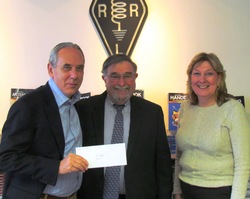
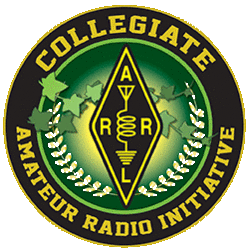 "Last year while working at the Yale Medical School, James Surprenant, AB1DQ -- a Yale colleague -- came to my office and noticed the antique radios. Twenty minutes later I had found my elusive Elmer," Snyder recounted.
"Last year while working at the Yale Medical School, James Surprenant, AB1DQ -- a Yale colleague -- came to my office and noticed the antique radios. Twenty minutes later I had found my elusive Elmer," Snyder recounted.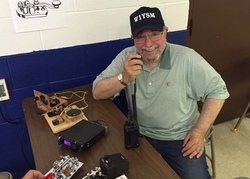
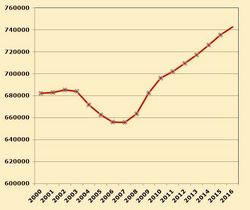
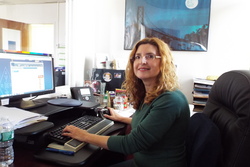
.JPG)
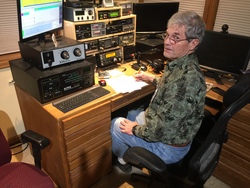
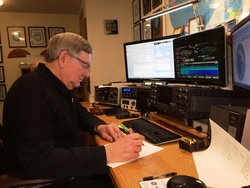
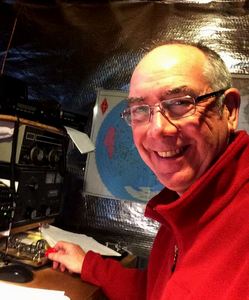
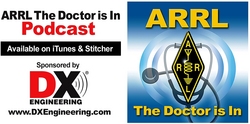 Sponsored by
Sponsored by 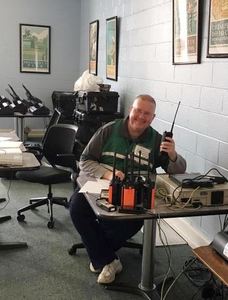
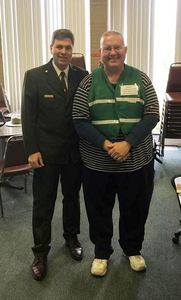
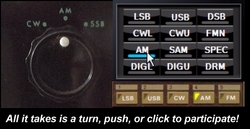 Amateur Radio voice-mode transmissions on the HF bands into the 1960s were AM, the same mode that used to predominate in radio broadcasting. Single-sideband (SSB), a form of AM, gradually took over the bands, although not without some pushback! Today, a group of dedicated radio amateurs keep the magic flame alive, getting on AM frequently, and for many of them, AM is their primary operating mode. The AM Rally gives the uninitiated a chance to dip a toe into the pool, so to speak.
Amateur Radio voice-mode transmissions on the HF bands into the 1960s were AM, the same mode that used to predominate in radio broadcasting. Single-sideband (SSB), a form of AM, gradually took over the bands, although not without some pushback! Today, a group of dedicated radio amateurs keep the magic flame alive, getting on AM frequently, and for many of them, AM is their primary operating mode. The AM Rally gives the uninitiated a chance to dip a toe into the pool, so to speak.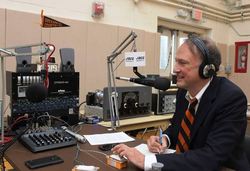
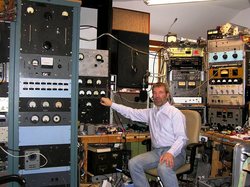
 This helps the League to extend its reach in public service, advocacy, education, technology, and membership.
This helps the League to extend its reach in public service, advocacy, education, technology, and membership.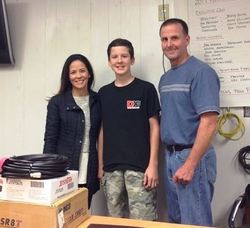

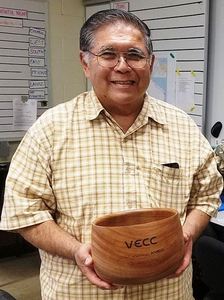
.jpg)
 Predicted solar flux is 76 on February 2-3; 75 on February 4; 76 on February 5-6; 75 on February 7-9; 77 on February 10-12; 78, 79, and 81 on February 13-15; 83 on February 16-18; 85 on February 19-21; 80 on February 22-24; 75 and 76 on February 25-26; 75 on February 27-March 1; 74 on March 2-3; 72 on March 4-5; 75 and 76 on March 6-7, and 77 on March 8-11.
Predicted solar flux is 76 on February 2-3; 75 on February 4; 76 on February 5-6; 75 on February 7-9; 77 on February 10-12; 78, 79, and 81 on February 13-15; 83 on February 16-18; 85 on February 19-21; 80 on February 22-24; 75 and 76 on February 25-26; 75 on February 27-March 1; 74 on March 2-3; 72 on March 4-5; 75 and 76 on March 6-7, and 77 on March 8-11.








